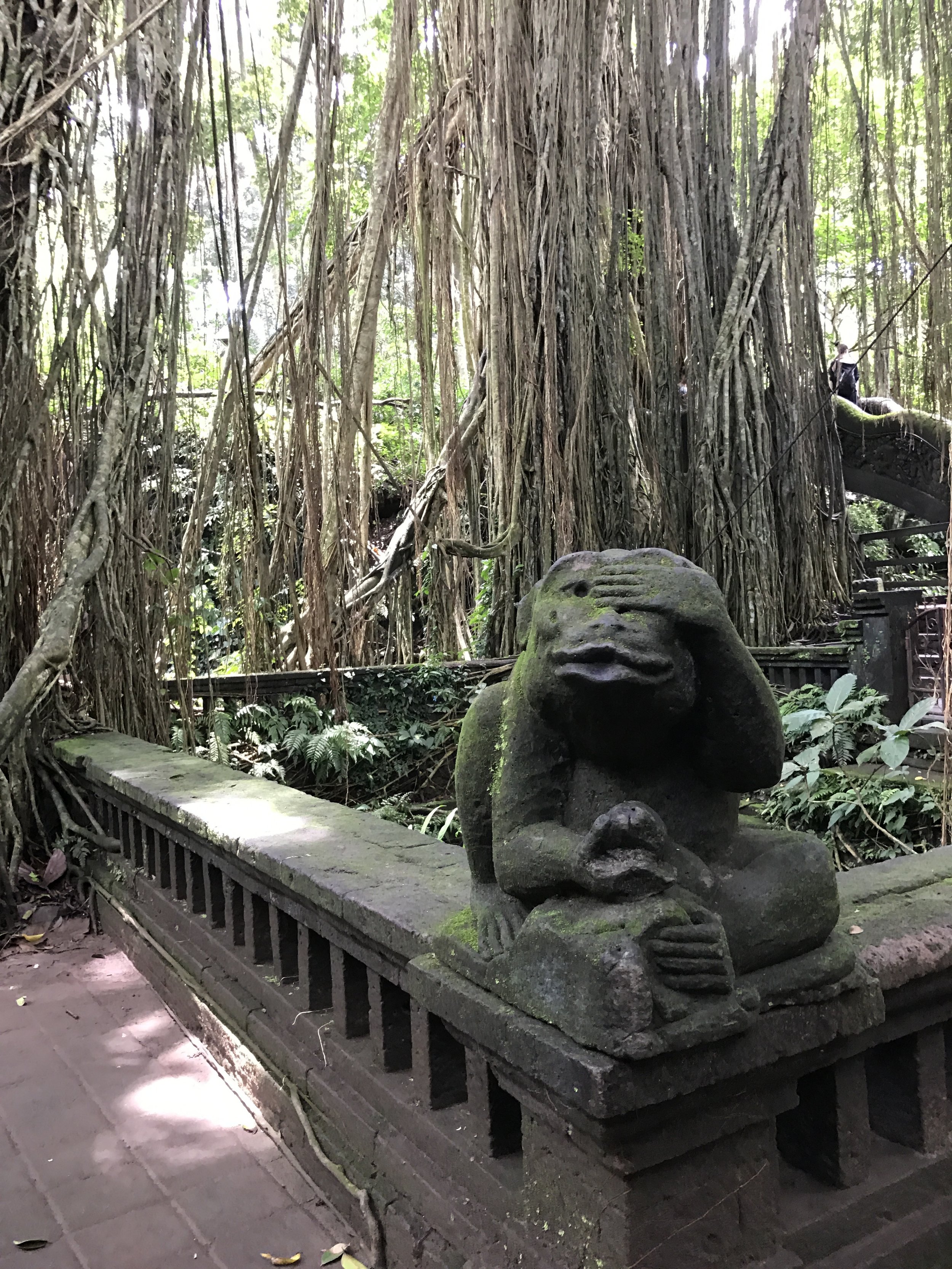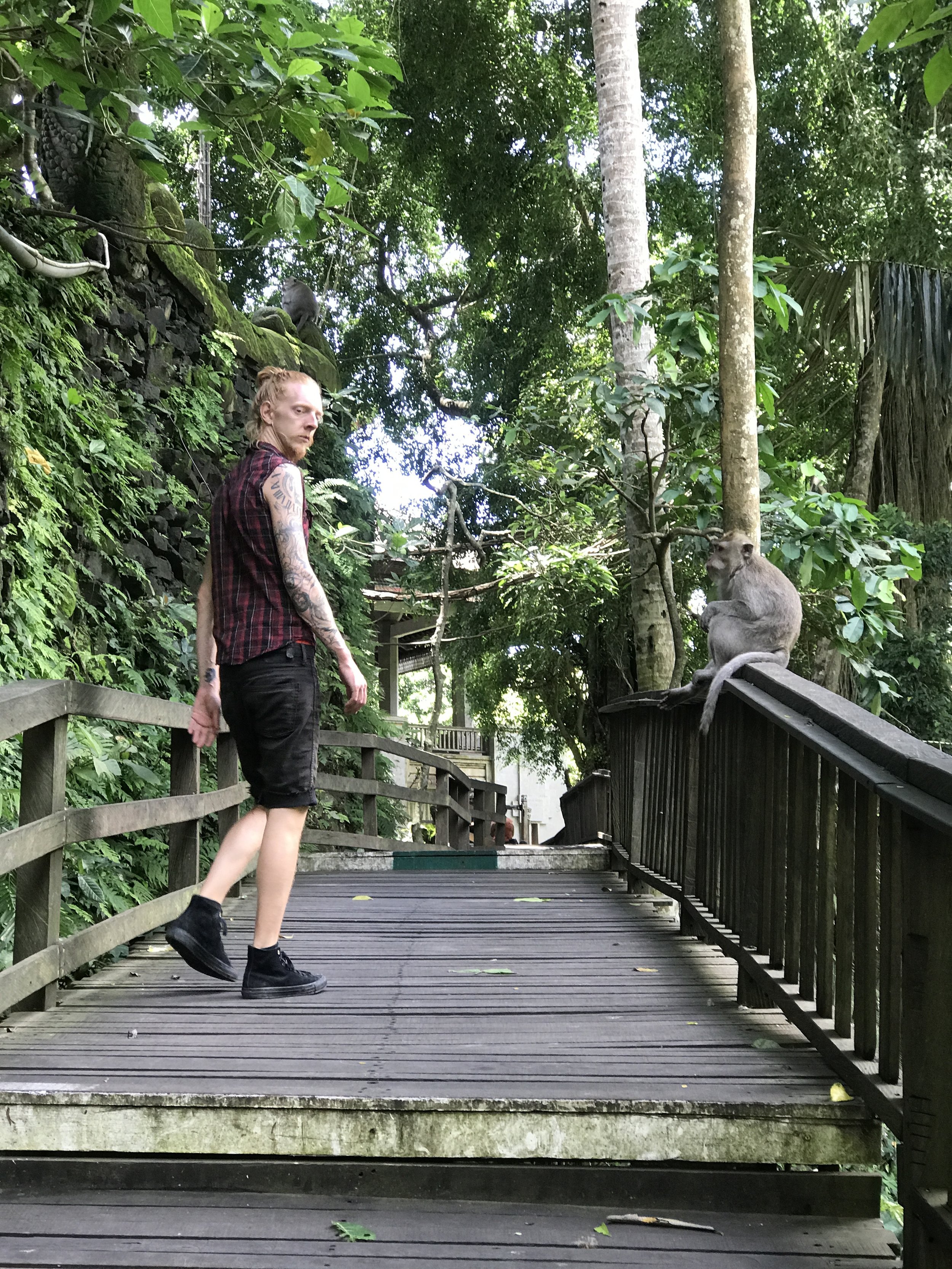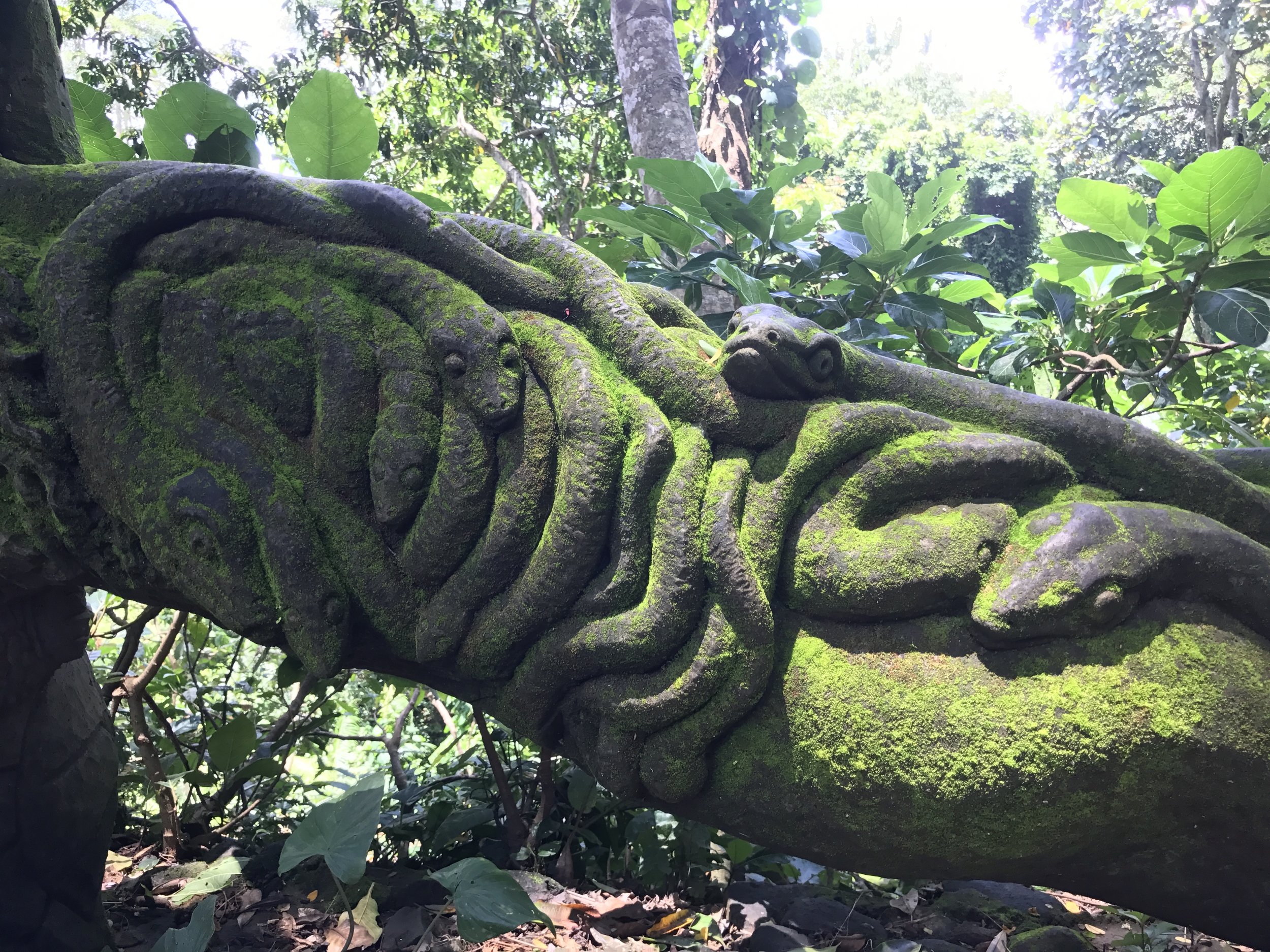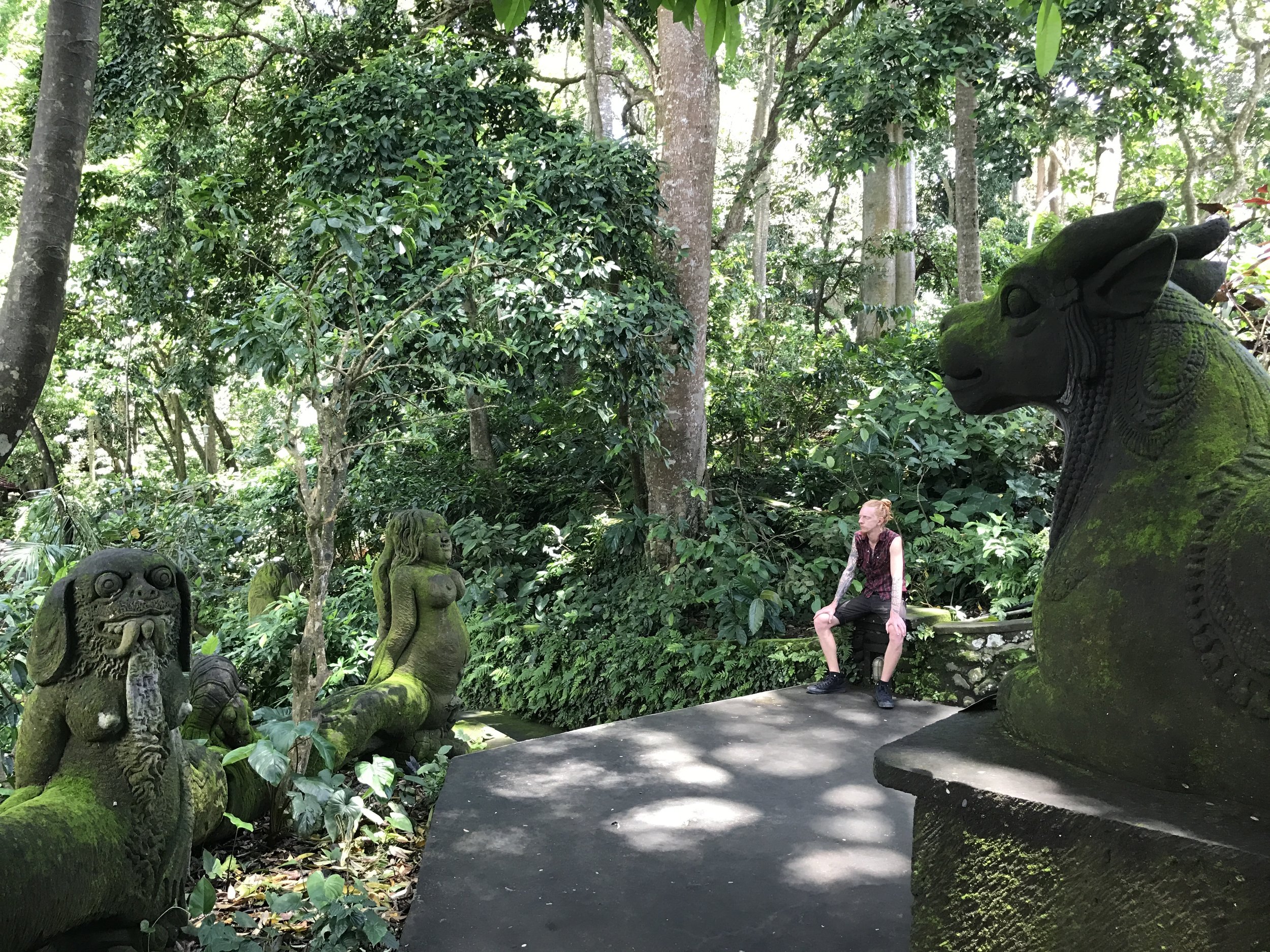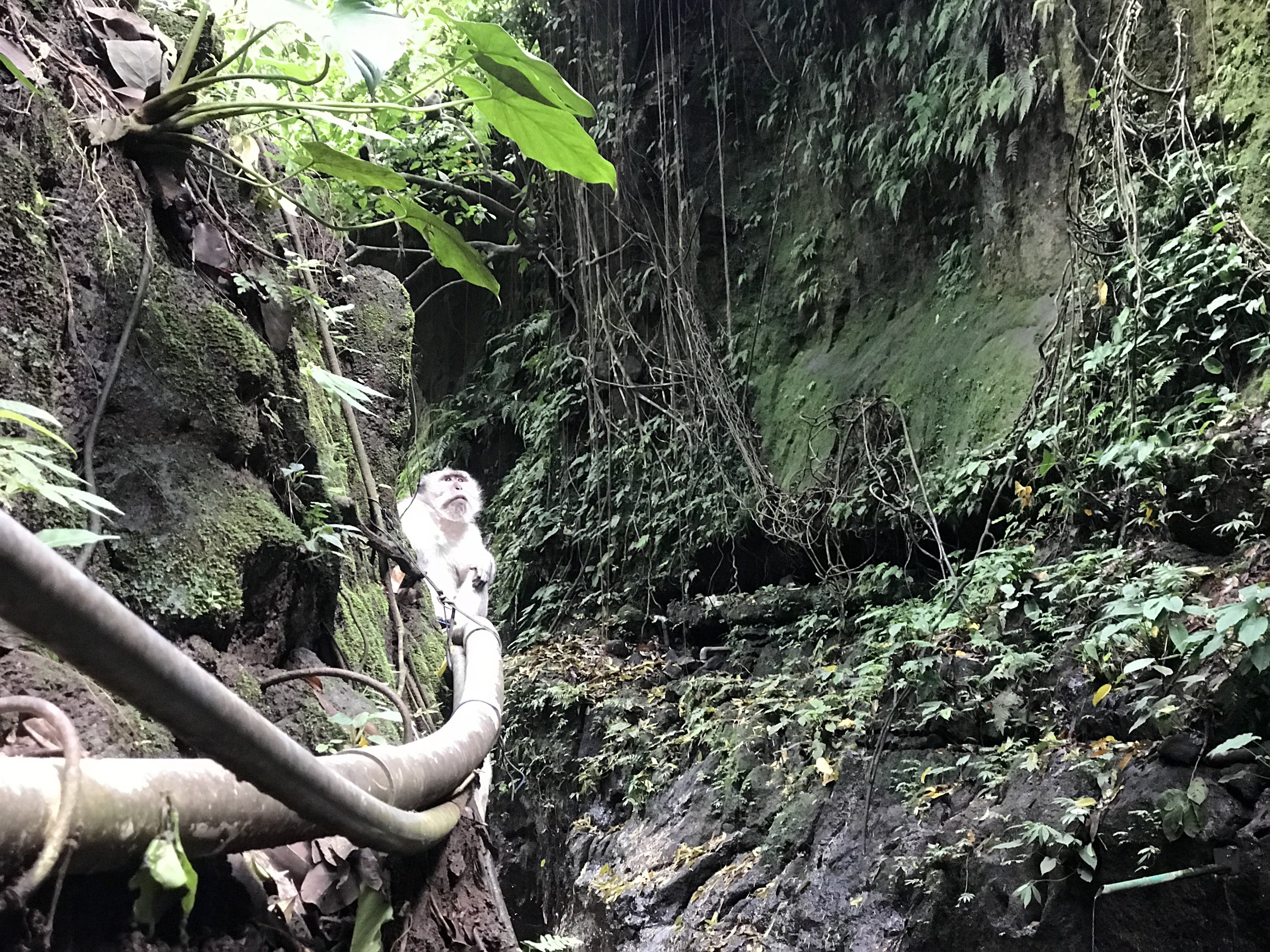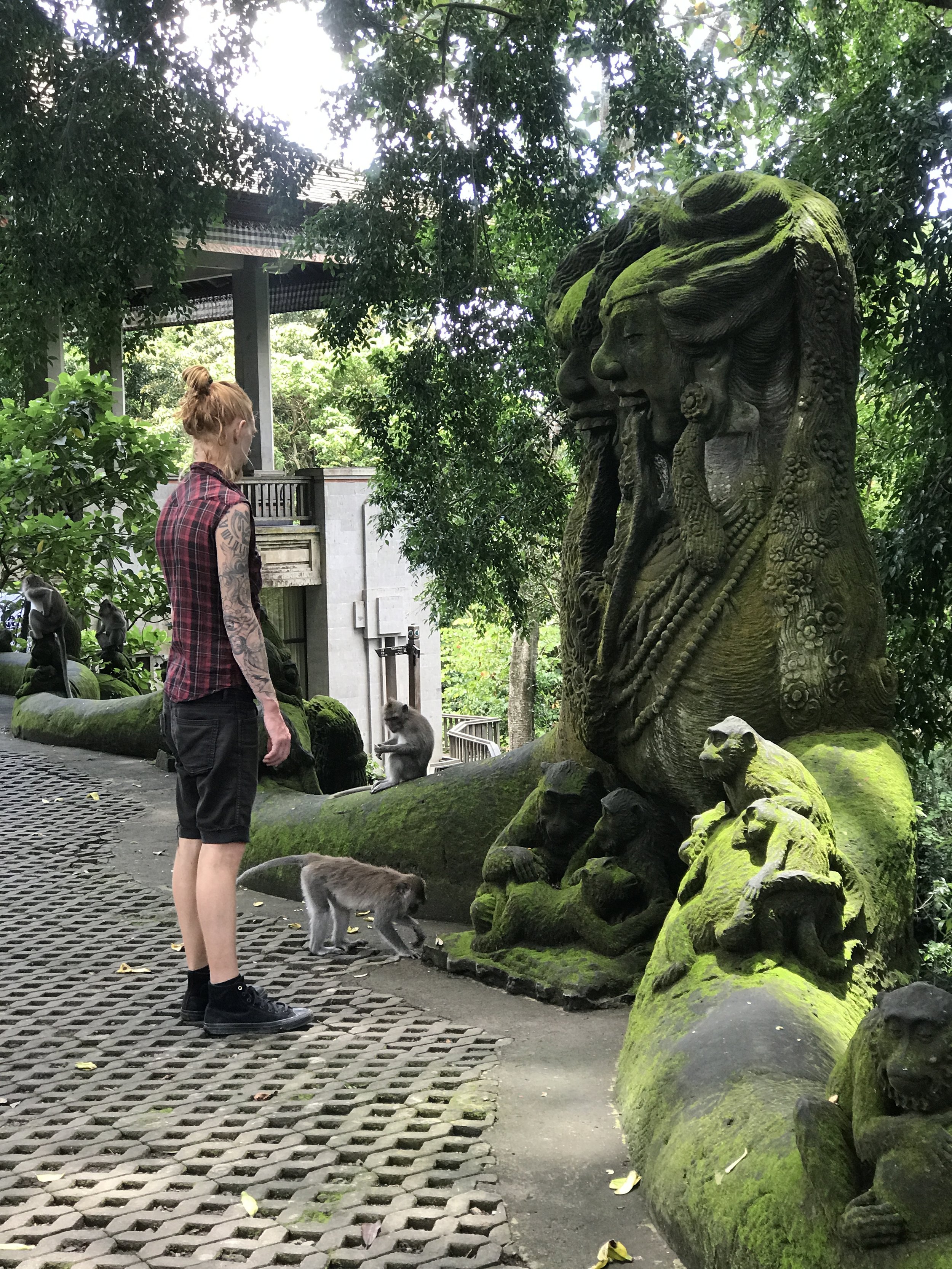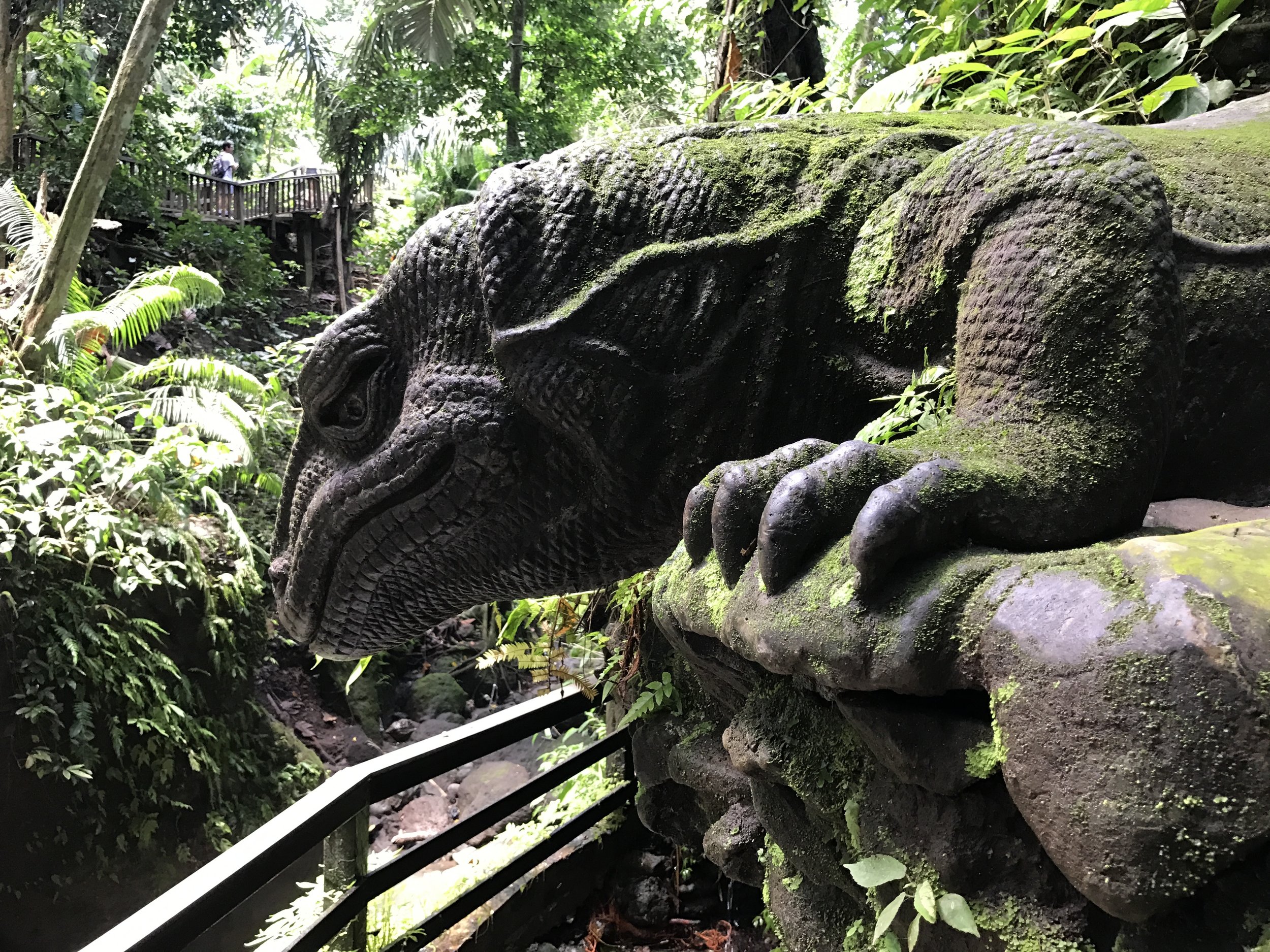INDONESIA
The Sacred Monkey Forest Sanctuary, or Mandala Suci Wenara Wana in Balinese, is a top tourist attraction in Ubud, seeing roughly 10,000 visitors a month. If you’re traveling in the area, it’s likely the Monkey Forest is on your list, and it should be. Here, you’ll find yourself tucked away from the hot and bustling city in 30 acres of jungle comprising over a hundred species of trees. Transported to another time, you’ll have the opportunity to cross a dragon bridge amidst temples built in the 14th century all while surrounded by moss-covered statues, and of course, hundreds of monkeys!
Male macaques begin growing their beards and mustaches after they start having babies, as early as 3-5 years old.
The Monkey Business
The sanctuary is home to 600+ Balinese Monkeys, also known as long-tailed Macaques, divided into five groups that live in different territories from the main temple to the cemeteries. About 100-120 individuals make up each group and range in age from infants to adults. You will see them everywhere, roaming the premises freely, and even in the surrounding streets, making it important to remain mindful and alert that you are in a wild animal’s territory.
Living in such a large population makes conflicts among the groups of monkeys unavoidable due to territory infringements. This is pronounced in the dry season when certain groups must cross into others’ territories to bathe in the river. You may see some squabbling, particularly at group borders. Though listening to the monkeys holler and watching them chase one another can be a combination of interesting, amusing and intimidating, their disagreements have nothing to do with visitors, who can skirt around the spats without incident. Though the monkeys are not aggressive by nature, they will defend themselves if feeling threatened. This is doubly true when it comes to mothers and their babies.
Seated with two juveniles, a mother holds her baby close.
Although the sanctuary expressly asks visitors not to touch, grab or disturb the monkeys, especially babies, expect to see many visitors interacting with them, feeding the monkeys from piles of sweet potatoes provided as part of their daily diet, attempting to hold hands, and coaxing them onto their shoulders for a photo op. Though this is permitted, it’s not recommended, and injuries can occur if visitors attempt to get too cozy with the monkeys. To help guests better understand how to properly behave around the residents, the staff provides a very comprehensive list of do’s and don’ts.
For an inside look at the Monkey Forest, watch our video tour.
While filming, a juvenile macaque grew interested in Chadley’s camera and started climbing up his leg, but by staying calm and following the procedures outlined below we avoided an incident.
Pro Tips Directly from the Staff: The number one rule is to stay calm, especially if a monkey jumps on you. This will be unlikely unless you’re holding food, hiding food, looking them in the eye (it can be interpreted as a sign of aggression), or anything that might interest them (including your camera) close to their face. If this happens while you’re holding food, simply drop it and slowly walk away. The monkey will jump off for the snack. Apply the same guidelines even if you’re not holding food. Just start slowly walking away and the monkey will likely get bored of you.
Regarding snacks, visitors are asked not to feed the monkeys anything outside of what is provided for them onsite in order to keep them healthy. It’s also not recommended to bring any food into the forest, and both plastic and paper bags are prohibited. This is both to temper the monkeys curiosity and to keep the sanctuary litter-free.
A Bit More On the Balinese Monkey
Snacking on offerings on Jl. Monkey Forest Road outside the sanctuary.
Long-tailed Macaques are native to South East Asia. The species is not endangered, but like many wild animals continues to face habitat loss. Luckily, they are very adaptable and can live in diverse environments. In fact, the largest threat to the species is hunting, as they are considered food sources and pests in various parts of the South East Asia.
The Balinese Monkey is active by day and rests at night. They are omnivores whose diet in the Monkey Forest consists mainly of sweet potato (given 3 times a day), banana, papaya leaf, corn, cucumber, coconut, and other local fruit. Though they are well fed at home, they will leave the forest to search for food in the busy streets surrounding the sanctuary where they can snag a plethora of goodies from trashcans, restaurant tables and daily offerings placed in front of homes and businesses. On average, male macaques live up to 15 years. Females can live to be 20.
Planning Your Visit
A welcoming committee monkey's around the main entrance.
Have we mentioned that macaques are known for being naughty? When planning your visit it’s good to be aware of what you plan to wear and bring along with you. Definitely watch your accessories while in the forest. Sunglasses, earrings, jewelry, flip-flops, etc. are all very appealing items to steal if you’re a Balinese monkey. We probably went above and beyond in being cautious about our apparel, and opted not to bring backpacks to avoid attracted extra attention from the residents. Chadley wore a shirt with snapping pockets, which was great for storing cash. We made sure to wear the straps on our camera to avoid taking things in and out of our pockets too often. The monkeys are very curious about what visitors might have tucked away.
Hearing that a friend had her sandal stolen off her foot by a monkey in Uluwatu, we wore sneakers, and after seeing photos of women having their tube tops pulled down by the monkeys, I wore a button up shirt and shorts.
As mentioned earlier, it’s best not to bring any food into the sanctuary. The monkeys will know and try to find it. But there are plenty of restaurants and food carts outside for when you get hungry. Most people only spend 2-3 hours visiting, anyway. At the time of this writing, the Monkey Forest is open daily for a small fee. Click here for the most up to date information on hours and pricing.
Pro Tip: Since the sanctuary hosts over a million visitors a year, it’s good to expect crowds. If you’re looking for solace, however, there are plenty of paths to roam and benches to sit where you can escape the groups gathered at the Main and Holy Spring Temples to watch the monkeys go about their day.
Tri Hita Karana – Conservation, Culture & Well-Being at the Core
The dragon bridge at the Holy Spring Temple sits before a wall of banyan tree vines.
The Sacred Monkey Forest Sanctuary upholds the Hindu philosophy of Tri Hita Karana as its principal mission, meaning “three ways to reach spiritual and physical well-being.” With ‘Tri’ meaning three, ‘Hita’ meaning happiness, and ‘Karana’ meaning cause or manner, this philosophy focuses on how people can maintain a harmonious relationship between themselves and their fellow humans, their environment, and god in daily life. As an international tourist destination and ‘living laboratory’ for educational institutions, this philosophy reflects the Monkey Forest’s desire to create peace and harmony with its staff, visitors, inhabitants, plant life, historic temples, local community, and the city of Ubud.
The forest is owned by the village of Padangtegal where it is located in Ubud’s southwestern corner flanked by a multitude of hotels, shops and restaurants. The village considers the sanctuary an important spiritual, educational, economic, and conservation center for its residents, who protect the monkeys and serve on the forest’s governing council.
When it comes to Balinese culture, the forest and its inhabitants play an important role in religion and tradition. Monkeys and their mythology are prominent in Balinese art, for example, appearing in the Kecak and Ramayana dance where the monkey is an important character in the story. And while the forest is home to 186 species of trees, some are considered particularly holy and are used in spiritual practices. These include the Majegan, which is used exclusively to build shrines, the leaves of the Berigan for cremation ceremonies, and the Pule Bandak, which is thought to embody the spirit of the forest and is used to make powerful masks (don’t worry, the trees aren’t killed to make them).
Making A Difference
Monkeys are often seen helping one another keep clean.
With a booming tourism industry resulting in increased deforestation and massive amounts of waste, Bali’s environment from its forests to shorelines is under threat, making wildlife sanctuaries like Ubud’s Sacred Monkey Forest critical to the eco-tourism movement. With Tri Hita Karana at the heart of their mission, the Monkey Forest honors humanity, environment, education, and religion by providing a conservation area for Balinese monkeys, rare plants and those used in ritual to visitors and city-dwellers alike, offering an oasis in an urban environment.
Knowing your visit will not only provide you with lasting memories and a one of a kind experience, but with the knowledge that you are supporting locals and important conservation efforts while you travel feels great, too. Have fun, be respectful, and watch your stuff!
SNAPSHOTS


